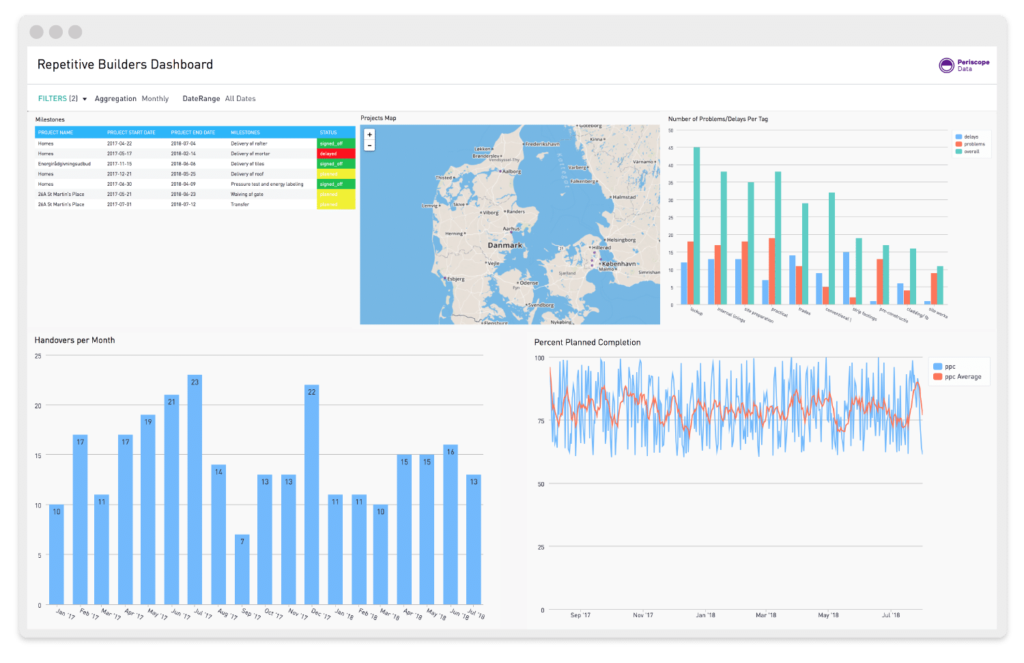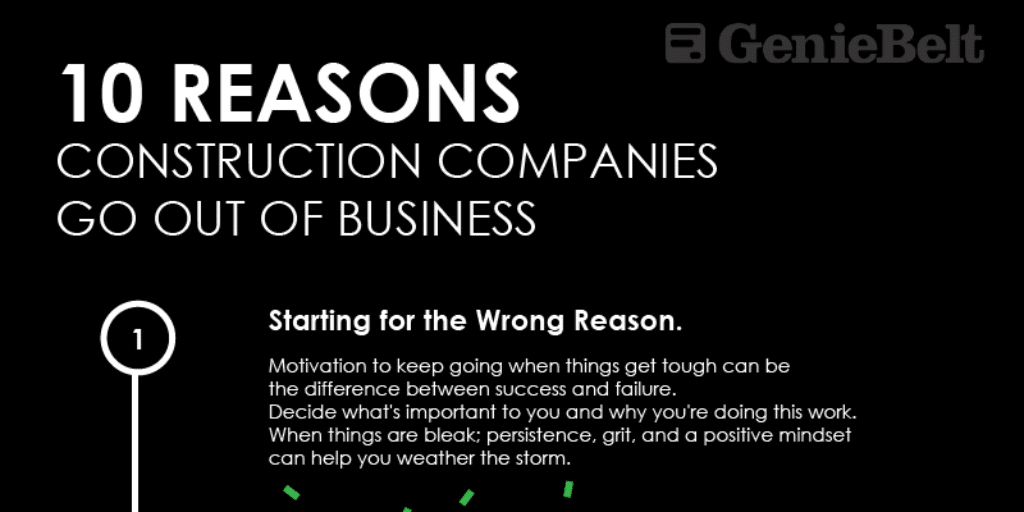A construction dashboard allows a company to see all their data in one location, so they can see if they are finding success or failing within the industry. The information on the construction dashboard is available in real-time, so there is never a question on how old any of the data truly is. These dashboards are commonly used to make informed decisions about a business, especially when it comes to the bottom line.
The three types of dashboards in construction
There are three types of dashboards in the business world and they all serve a different purpose when it comes to seeing how a business is doing. The three dashboards are as follows:
1. Operational dashboard
This is the most commonly used dashboard, because it shows real time data in comparison to all the daily operations. There is a lot of data available to see how a company is performing, but there is no need to do a lot of work to get to the bottom line.
2. Analytical dashboard
Analytical data is excellent for companies who want to see how much they have improved during a set amount of time. These dashboards are not as easy to read, or evaluate, so a company may need to hire a specialist to find the information they need.
3. Strategic dashboard
Any company that is trying to utilize a strategy to improve their performance will want to have a strategic dashboard in place. This will allow them to see their key performance indicators and make sure they are matching their strategies.
The benefits of using a construction dashboard
There are many benefits to using a construction dashboard, but as with everything else, some stand out more than the rest. Here are the main benefits to using this type of dashboard:
- Transparency with all data – Data is important for any company and a dashboard allows companies to see it all in one easy to find location.
- Access to the data – As mentioned above, a dashboard places all the data in one easy to find location. Therefore, no one has an excuse to not look at that data at any time.
- Make better decisions – Once a person continuously looks at the data on the construction dashboard, they can start making better decisions for their company.
- Accountability – It is much easier to hold certain people accountable, because all the information will show who is responsible for what on the dashboard. There will no longer be any guesswork as to who was in charge of what.
- Interactivity – Since dashboards offer an interactive experience, it is easy to see where changes are working and where improvements still need to be made.
Is a dashboard necessary in construction?
While it is not truly necessary to have a construction dashboard, it can be a helpful tool that offers amazing rewards. Anyone that has been contemplating getting a construction dashboard should ask themselves the following questions:
- Can my company improve? Do I know where to start? – If you answered yes and then no, a dashboard could give you the info you need to make the changes you desire.
- Do I have any clue what to do with all the data I am collecting and monitoring? – A dashboard could help you make sense of all this data and show you how to use it for your benefit.
- Am I receiving the ROI I desire? – If you answered no, the dashboard could help you change that answer to a yes.
- Am I falling behind all my competitors? – No one wants to be at the back of the field! Everyone wants to be number one and a dashboard could help you get there.
- Do I have data all over the place? A dashboard would show you your data all in one location, making it much easier for you to figure out what it all means in a shorter amount of time.
Best Construction Dashboards
There are many different construction dashboards available, but here are the ones that constantly stand out as the best:
WorkOtter
It is easy to customize the layout of this dashboard, so all your important data is towards the top and everything else is underneath. The best part about this construction dashboard is every user can personalize it to meet their needs. This is excellent since the construction field does not have a one size fits all approach for all employees. You can also email dashboard reports automatically, saving you even more time every day or week.
BRIC
This is an excellent dashboard if you want to see the schedule for the week, as well as who is overbooked and who has a little extra time. This is excellent if you are trying to complete a project on time or even ahead of schedule.
ClickUp
No one can customize the dashboard with ClickUp, but everyone’s statuses can be customized to fit their needs. Therefore, not everyone is receiving the same report at the end of the day, so people only need to spend their time on the sections of the reports that matter the most to them. This dashboard is also helpful when it comes to tracking tasks that still need to be completed and which ones have been finished already.
MeisterTask
The dashboard for MeisterTrek has an overview to the left and a bigger breakdown to the right. Everything can be divided into sections and additional columns can be added for notifications and tasks. This is an easy dashboard when it comes to collaborating with a team.
PM3
Everyone’s dashboard can be individualized with PM3, so no one needs to have information they do not need for their job. This ensures everyone is responsible for their own needs and the higher ups know who to talk to when things start looking poor on the dashboard. This dashboard focuses on the financial part of a business the most, so some of the smaller details may fall through the cracks.
Everyone within the construction industry should use a construction dashboard, because it allows a company to see how they are performing without spending hours pouring over different spreadsheets. Plus, since the information is all in one place, it is easy to access from almost anywhere. That means that a person does not need to be in their office to check in and see how everything is going on a specific project.




